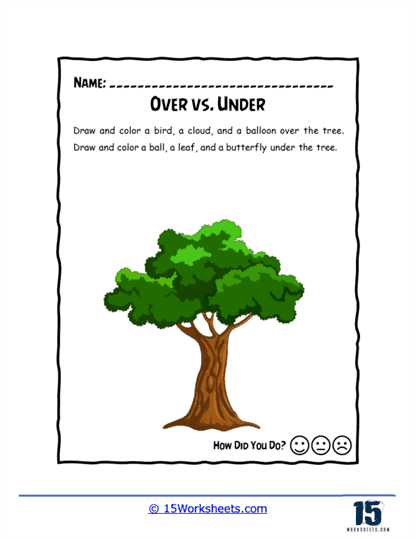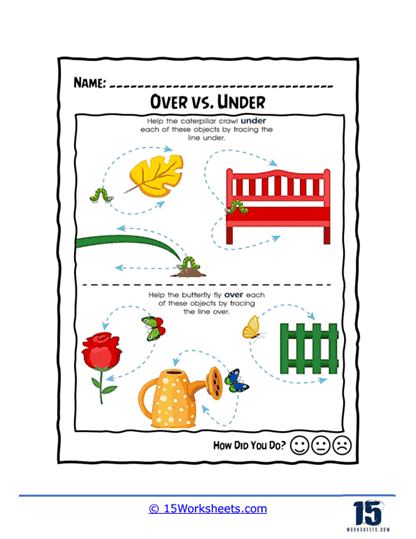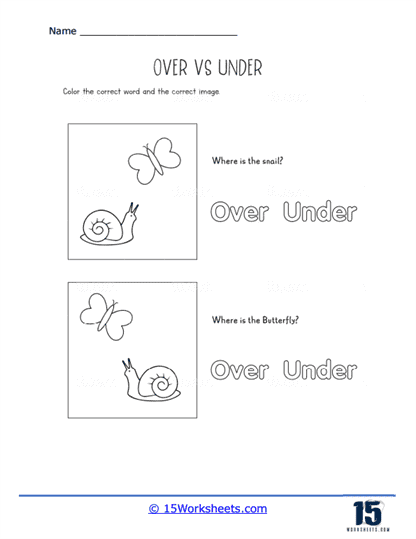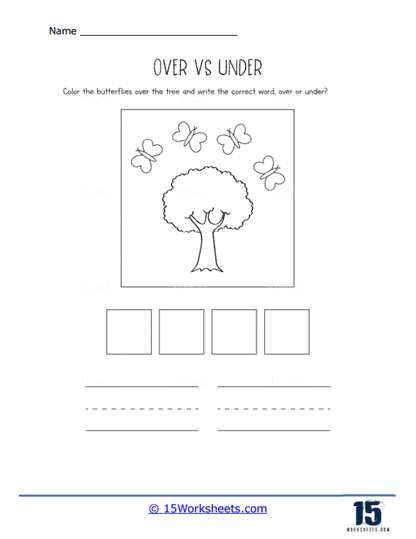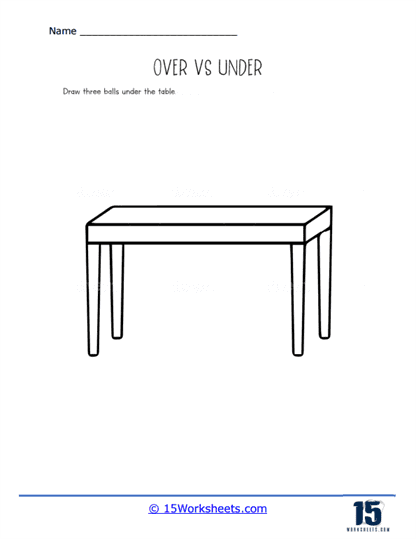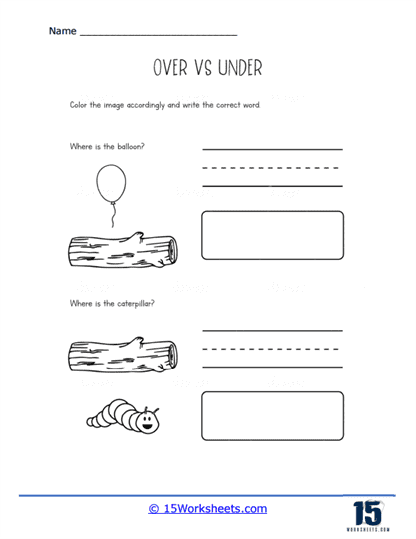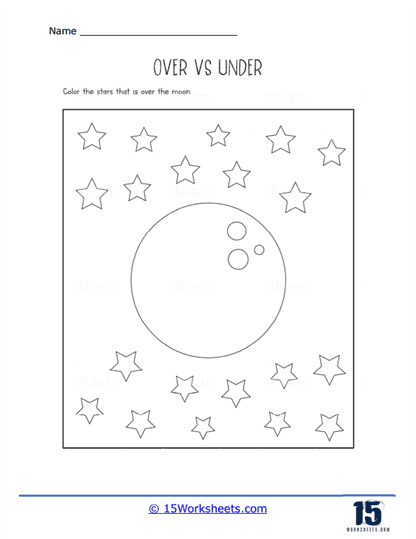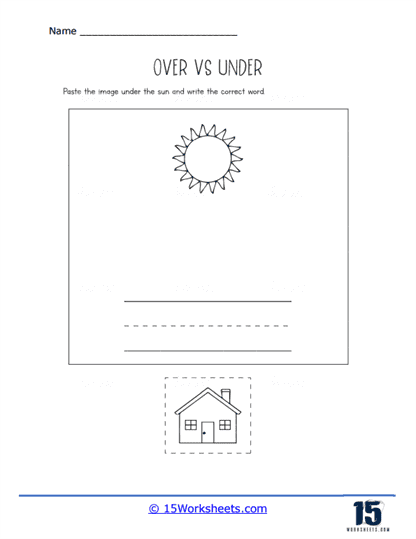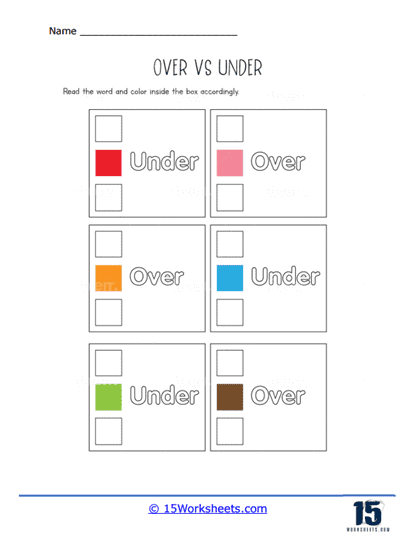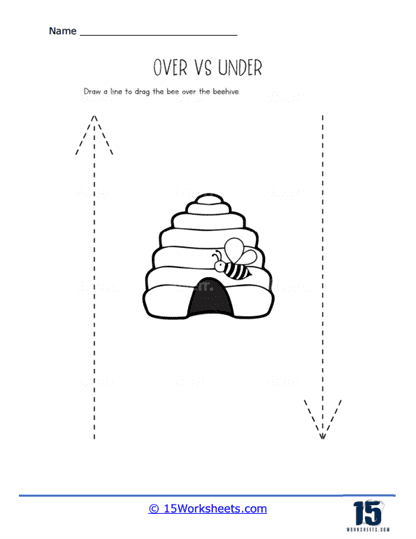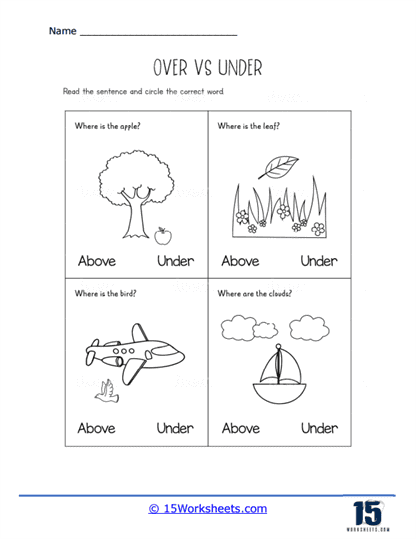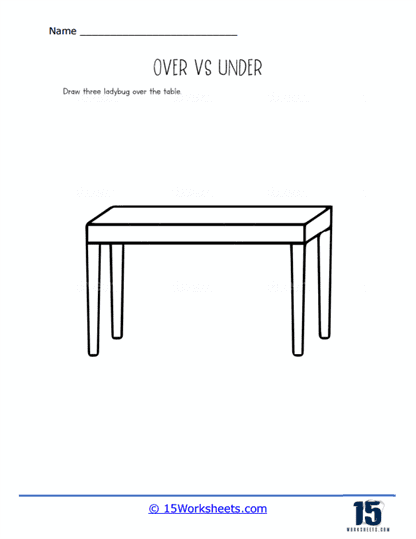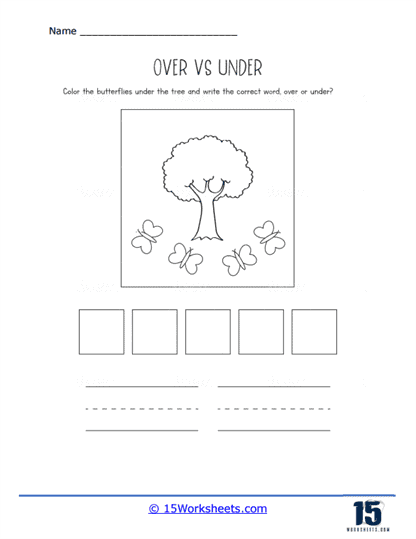Over or Under Worksheets
About These 15 Worksheets
These worksheets are used in early childhood learning to help children understand the basic concepts of spatial relationships and directionality. The words “over” and “under” are prepositions which describe the position of one object in relation to another.
In the context of these worksheets, a picture might show a cat “over” a box or “under” a table. The child using the worksheet might be asked to circle the object that is “over” or to draw a line to the object that is “under”.
These worksheets are important as they help kids learn to visually recognize these concepts, and they’re a great way to improve language and comprehension skills.
Think of it like this, in video games, when you start off, you learn the basic controls like moving left, right, jumping etc. This is similar to that, it’s like learning the basic controls of language and understanding.
How To Teach The Concept of Over or Under
Here are some steps and activities that you can use to make the learning process enjoyable and effective:
1. Demonstrations – The first step is to show them what “over” and “under” mean. You can use everyday objects for this. For instance, take a toy and move it over a box and then under a table while saying the words aloud. Be sure to repeat this demonstration a few times.
2. Play Interactive Games – Games are a fun way for kids to learn. A game of “Simon Says” can be a good start. You could say “Simon says put the ball under the chair” or “Simon says jump over the line”. This helps to reinforce the concepts while they’re having fun.
3. Storytime – Incorporate the concepts of “over” and “under” into storytelling. Use a picture book that includes these concepts and point out instances of “over” and “under” as you read the story to them.
4. Worksheets – Use the over and under worksheets, found above, where kids can circle or color objects that are over or under other objects. You could also have them draw their own pictures with one object over another and one under another.
5. Outdoor Activities – Going outside to a playground, for example, provides real-world opportunities to understand “over” and “under”. They can go “over” a bridge or “under” a slide.
6. Songs and Rhymes – There are plenty of nursery rhymes and songs that incorporate the concept of over and under. “The Grand Old Duke of York” is a classic example.
Remember to be patient and consistent. It takes time for children to fully grasp these concepts. Reinforce them in daily conversation and through different activities. And most importantly, make sure the process is enjoyable for them!





